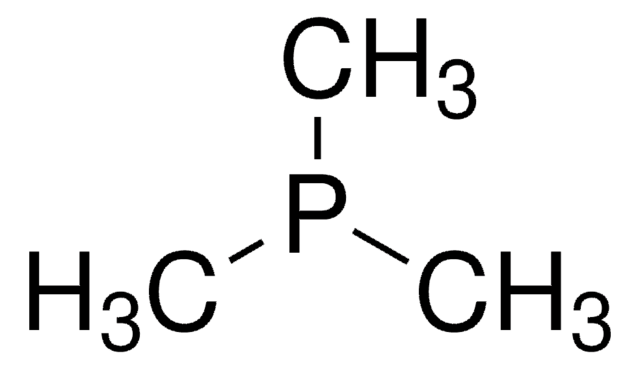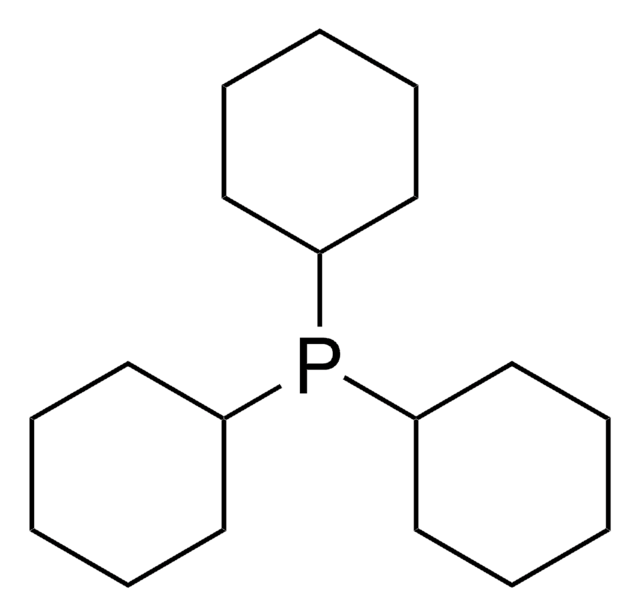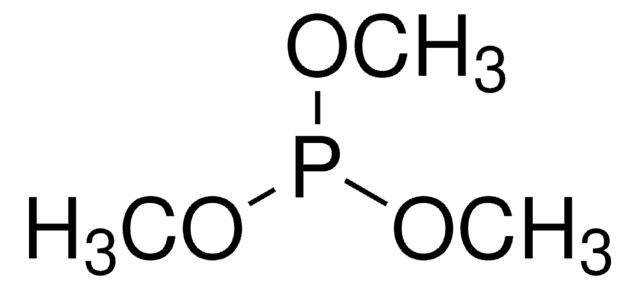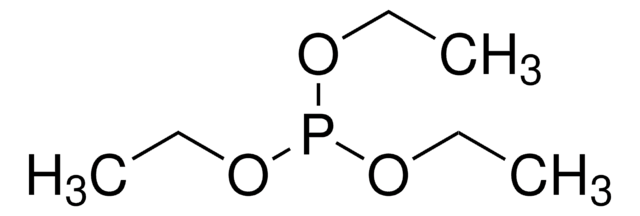323322
Trimethylphosphine
97%
Synonyme(s) :
PMe3
About This Item
Produits recommandés
Pression de vapeur
7.24 psi ( 20 °C)
Pureté
97%
Forme
liquid
Capacité de réaction
reaction type: Buchwald-Hartwig Cross Coupling Reaction
reaction type: Heck Reaction
reaction type: Hiyama Coupling
reaction type: Negishi Coupling
reaction type: Sonogashira Coupling
reaction type: Stille Coupling
reaction type: Suzuki-Miyaura Coupling
Pertinence de la réaction
reagent type: ligand
reaction type: Mitsunobu Reaction
reagent type: ligand
reaction type: Wittig Reaction
Indice de réfraction
n20/D 1.428 (lit.)
Point d'ébullition
38-40 °C (lit.)
Pf
−86 °C (lit.)
Densité
0.738 g/mL at 20 °C (lit.)
Groupe fonctionnel
phosphine
Température de stockage
2-8°C
Chaîne SMILES
CP(C)C
InChI
1S/C3H9P/c1-4(2)3/h1-3H3
Clé InChI
YWWDBCBWQNCYNR-UHFFFAOYSA-N
Vous recherchez des produits similaires ? Visite Guide de comparaison des produits
Application
It can be used:
- In transformation of azides into carbamates; aziridines to azidoalcohols; and ketoximes to ketones with 2,2′-dipyridyl diselenide.
- In Aza-Wittig reaction;, C-H bond activation of imines; cross-coupling reactions.
- In the preparation of (cyanomethylene) trimethylphosphorane (CMMP) which is used as a reagent in Mitsunobu type reaction.
- As a reagent in the synthesis of ruthenium trimethylphosphine complexes, which in turn are used as catalysts for hydrogenation of CO2 to formic acid.
Produit(s) apparenté(s)
Mention d'avertissement
Danger
Mentions de danger
Conseils de prudence
Classification des risques
Eye Irrit. 2 - Flam. Liq. 2 - Skin Irrit. 2 - STOT SE 3
Organes cibles
Respiratory system
Code de la classe de stockage
3 - Flammable liquids
Classe de danger pour l'eau (WGK)
WGK 3
Point d'éclair (°F)
-2.2 °F - closed cup
Point d'éclair (°C)
-19 °C - closed cup
Équipement de protection individuelle
Eyeshields, Faceshields, Gloves
Faites votre choix parmi les versions les plus récentes :
Déjà en possession de ce produit ?
Retrouvez la documentation relative aux produits que vous avez récemment achetés dans la Bibliothèque de documents.
Notre équipe de scientifiques dispose d'une expérience dans tous les secteurs de la recherche, notamment en sciences de la vie, science des matériaux, synthèse chimique, chromatographie, analyse et dans de nombreux autres domaines..
Contacter notre Service technique








